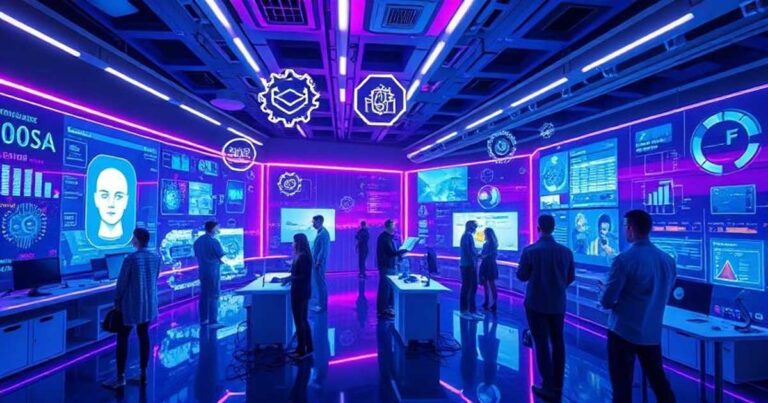In 2025, artificial intelligence is no longer a luxury or novelty — it’s a necessity. From personal productivity to enterprise-level operations, AI tools are transforming how we live, work, and think. But among hundreds of AI tools, only a few have emerged as the leaders. Why are these tools dominating the scene? What makes them so special?
This article dives deep into the top AI tools of 2025 and explores the reasons behind their massive adoption.
1. ChatGPT-5 by OpenAI
With unmatched language comprehension, context handling, and human-like conversational abilities, ChatGPT-5 is now integrated into education, customer support, legal services, and even emotional therapy apps.
Why it’s popular:
- API integration across platforms
- High accuracy in conversation
- Supports voice interaction
2. MidJourney v7 & DALL·E 4
These AI-powered image generation tools have revolutionized digital art, content marketing, and branding. From hyper-realistic artwork to brand logos, users are designing without needing a design degree.
Why it’s popular:
- Generates studio-quality visuals
- Customizable prompts
- Creative freedom for non-designers
3. Copilot X by Microsoft
Integrated with Office 365 and Windows 11, Copilot X assists users in writing emails, generating reports, and even coding inside Visual Studio.
Why it’s popular:
- Seamless integration
- Boosts work efficiency
- Works across Microsoft products
4. Perplexity AI
A research assistant that replaces traditional search engines. It delivers cited, structured, and contextually accurate responses to complex queries.
Why it’s popular:
- Real-time data fetching
- Reference links included
- Fast and reliable for students & professionals
5. Notion AI
For productivity nerds, Notion AI is a game-changer. It writes, edits, summarizes, and organizes your notes intelligently.
Why it’s popular:
- Streamlines task and project management
- Enhances team collaboration
- Ideal for startups and creators
6. Runway ML
A favorite in video editing, Runway lets creators generate AI-based effects, remove backgrounds, and even create AI-generated video content.
Why it’s popular:
- Saves editing time
- No need for green screen
- Creative automation in video production
7. Grammarly GO
More than just grammar — it now writes content, suggests tone changes, and adapts based on the user’s writing style.
Why it’s popular:
- Real-time writing assistant
- Available as browser extension
- Perfect for writers and bloggers
The Underlying Reasons for Popularity
- User-Friendly Interface: Tools that require minimal learning dominate.
- Time Efficiency: AI tools save hours of work in minutes.
- Accuracy: Tools with reliable, error-free outputs win trust.
- API & Integration: The more platforms they connect to, the more useful they become.
- Real-Time Capability: Users want up-to-date and interactive outputs.
Conclusion
The rise of AI in 2025 isn’t just technological; it’s cultural. These tools are shaping how we interact, express, and create. Understanding why certain tools are at the top helps us not only adopt them better but also predict where the AI landscape is heading next.
The future isn’t just artificial — it’s intelligent.
Frequently Asked Questions
What is the most popular AI tool in 2025?
ChatGPT-5 by OpenAI is one of the most widely used AI tools in 2025 due to its advanced conversational capabilities and integration options.
Which AI tool is best for image generation?
MidJourney v7 and DALL·E 4 are considered the best tools for generating high-quality AI images in 2025.
Can AI tools help in coding?
Yes, tools like Microsoft Copilot X assist in writing and debugging code, especially within Visual Studio and other Microsoft environments.
Are AI tools suitable for students?
Absolutely. Tools like Perplexity AI and Notion AI help students research, organize notes, and manage tasks effectively.
Are AI tools replacing humans?
No, they are designed to enhance human abilities, improve efficiency, and reduce repetitive work — not replace creativity or decision-making.

Your comment will appear immediately after submission.